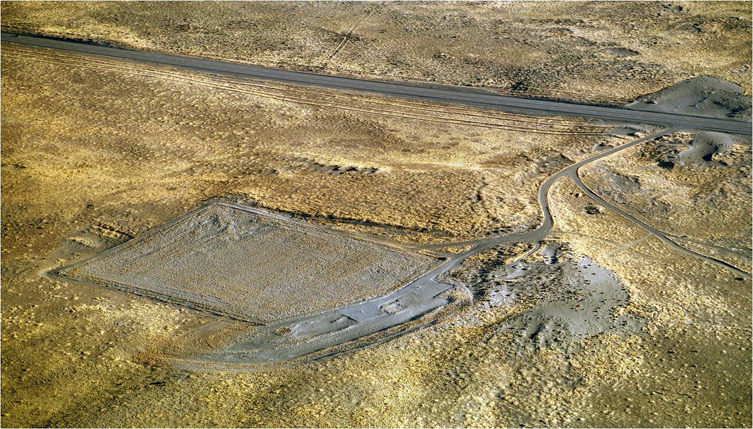The Hanford Nuclear Reservation where U.S. nuclear weapons were developed and manufactured is one of the most radioactively polluted places on the Earth. Millions of gallons of nuclear waste were poured into trenches and allowed to soak into the soil. Hundreds of tanks of waste were buried underground and now some are leaking. Radioactive contamination is leaking into the Columbia River where it runs past the Reservation. Cleanup projects have been proposed, funded, operated, halted and argued over for decades. Lawsuits have been filed against the Federal Government over the situation at Hanford. I have written many blog posts about the problems there. Once again the Reservation is in the news.
There are a number of different areas where radioactive waste was buried at Hanford. In the 618-10 Burial Ground, the "high-activity wastes included irradiated metallic uranium reactor fuel elements, plutonium, and high-concentration fission product streams from the development of radioisotope extraction and chemical separation processes such as the Plutonium Uranium Extraction (PUREX) process. Extremely high activity wastes were directed to underground standpipes called Vertical Pipe Units (VPUs). Other wastes were directed to open trenches in the burial ground."
There was a windstorm last week that spread some radioactive particles from the 618-10 Burial Ground. The waste trenches in the 618-10 Burial Ground are being dug up to recover radioactive materials. Washington Closure workers have been surveying the area six miles north of the nearby city of Richland, WA. They found contamination on a speck of sand that was forty feet from Route 4, the main Hanford highway that runs to the Wye Barricade.
A representative of Washington Closure, the company working on the trenches in the 618-10 Burial Ground, said "The levels do not pose a risk to the public or the workers cleaning it up. The contamination is not in a form that could be breathed in, or that would stick to a person’s skin or clothing." Although the contamination is not dangerous, nevertheless it is not supposed to be there.
Radiological control technicians will continue surveying the ground near the 618-10 Burial Ground for any other signs of contamination. They are shoveling any contamination found into bags for disposal. Once they are satisfied that all the contamination has been cleaned up, they will conduct an investigation to insure that it does not happen again.
During the work on the 618-10 Burial Ground trenches, surveys are conducted daily for any sign of contamination beyond the work site but there is extra concern after a windstorm. When a wind storm was predicted last week, the workers sprayed extra chemicals on the worksite to fix the soil and prevent it from being moved by the wind. Unfortunately, the fixative was not strong enough to protect the site from the seventy mile an hour winds during the storm.
Washington Closure has had continuing problems with contamination being spread around at the 618-10 Burial Ground since the summer of 2014. Small pieces of contaminated plastic have been found several times beyond the fenced area that is posted as containing radioactive hazards. Previous contamination did not get as close to the highway as the contamination discovered last week.
There are many more trenches that need to be cleaned up at Hanford. It is virtually certain that contamination will spread from those worksites. Hopefully, it will also pose "no hazard" to the public but there is no certainty that all of it will be found. Perhaps techniques and technologies for cleanup at Hanford are not quite sophisticated enough for the task. Maybe better systems will be developed in the future.
Hanford 618-10 and 618-11 Burial Grounds:
